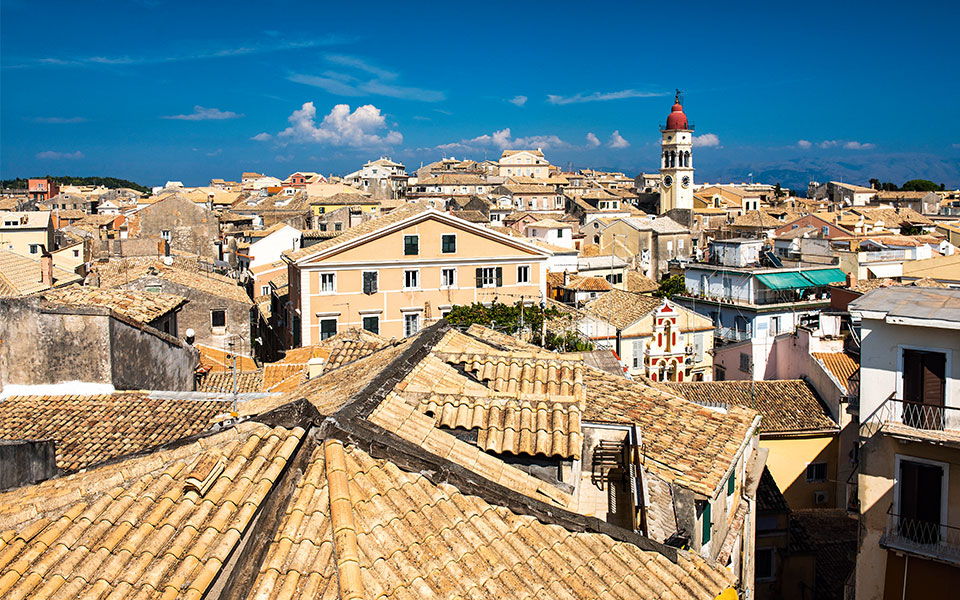Easter celebrations on Corfu are undoubtedly the most “melodic” in Greece, as Holy Week is filled with musical events that permeate every corner of the island’s capital. On Holy Thursday, follow in the footsteps of Corfiot music lovers and gather below the open windows of the Philharmonic Society of Corfu, the Old Philharmonic (colloquially known as the “Red” one), to listen to rehearsals of the “Adagio,” a mournful, neo-baroque composition.
On Good Friday, the procession of the Epitaphios (a decorated wooden bier representing the funerary bier of Christ) dominates the entire day, bringing the town to a halt. Schools, scout groups, musical ensembles and choirs are all present, as well as the town’s three Philharmonic Orchestras, which perform the following pieces: the Red performs the “Adagio,” the Blue performs Verdi’s “Marcia Funebre,” while the Kapodistria Philharmonic performs “Mariani’s Sventura” and Chopin’s “Funeral March.”
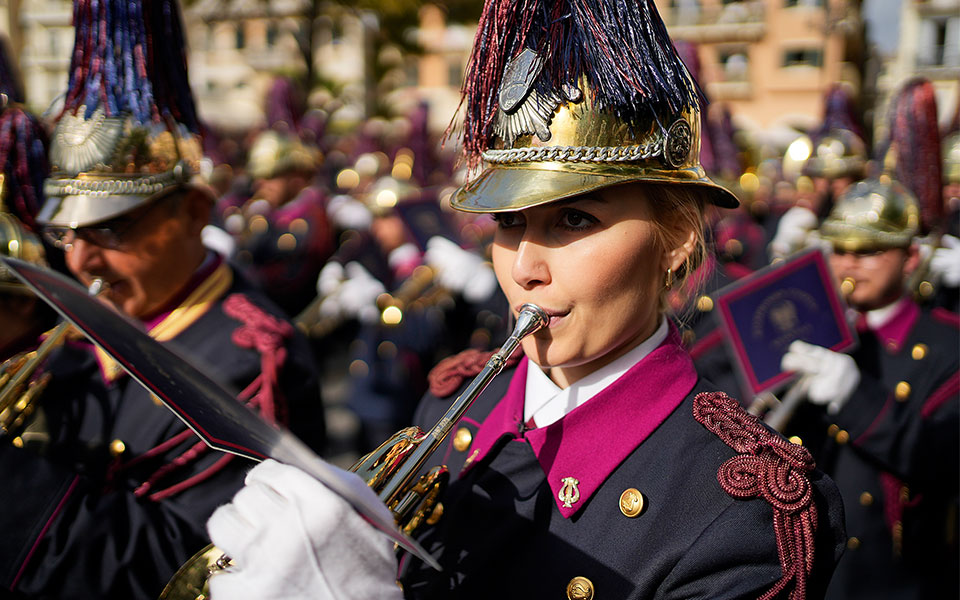
© AP Photo/Thanassis Stavrakis
In the early hours of Holy Saturday, at the Panagia ton Xenon Church in Aghios Spyridon Church Square, icons shake as a reconstruction of an earthquake is staged, symbolizing the return of Christ from Hades and his imminent Resurrection. A few hours later, the mourning litany at Aghios Spyridon Church and the procession of the Epitaphios takes place, just before the First Resurrection and the famous “botides” tradition. As the church bells ring out, hundreds of clay pots are dropped from balconies, smashing onto the streets below as passersby scatter and run for cover in the entranceways of buildings. Holy Saturday evening finds the psalms of Xristos Anesti (Christ Has Risen) mixing in with the sound of the three Philharmonics playing the once-banned Graikoi March.
In terms of cuisine, Easter in Corfu features fogatses (traditional brioche) and tsilihourda, the local magiritsa (soup made from lamb offal), made in a variety of ways: with red pepper or egg-lemon sauce, with or without rice. Accompany your Easter meal with a chilled glass of Corfu Beer, made in the local brewery.
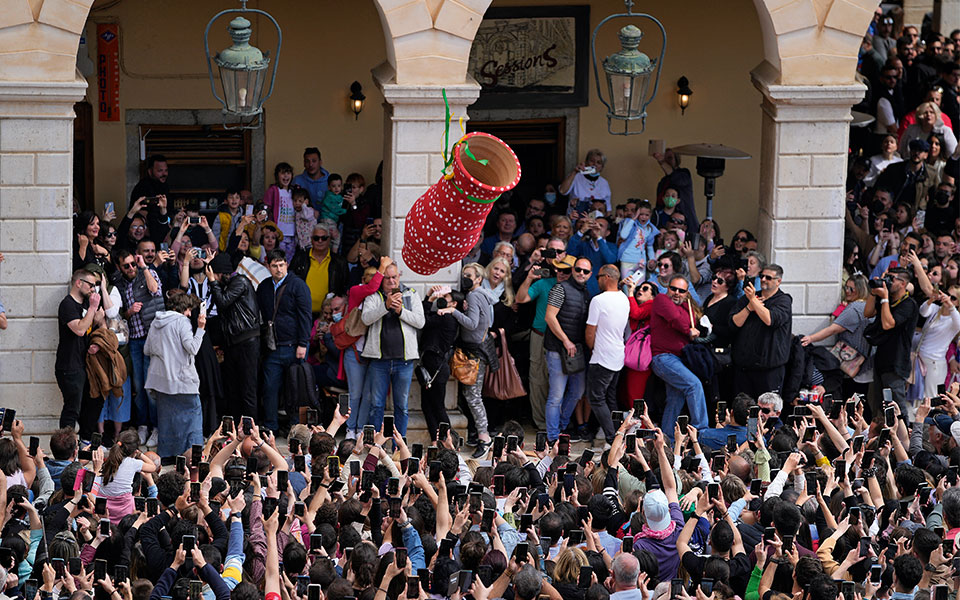
© AP Photo/Thanassis Stavrakis
Short and long wanderings
Corfu is a large island that can be divided into three regions: the north, the middle, and the south. Architecture, natural landscapes, cuisine and even local customs differ between each region.
A good way to really get to know Corfu would be taking a road trip. Start from the northern part and Old Perithia, an atmospheric village on the slopes of Mount Pantokrator. Even though the village has no permanent residents, it remains lively thanks to its famed tavernas that fill up with visitors, particularly on holidays and during the summer months. This is where the Corfu of stone and nature still survives. Take a walk through the old structures and observe the architectural particularities, such as the sundial at the old town hall, or the rounded arch in front of the old school building, before taking a seat at one of the tavernas for a glass of tsipouro and a piece of cod pastry with fennel.
Explore the natural beauty of the north and head to Nymfes Waterfalls, near Nymfes village, for an impromptu picnic on the wooden benches. Alternatively, you can go west until Porto Timoni and Limni, the famed twin beaches separated by a thin stretch of land. To reach them, you will need to walk approximately 1km along a footpath from the village of Afionas.
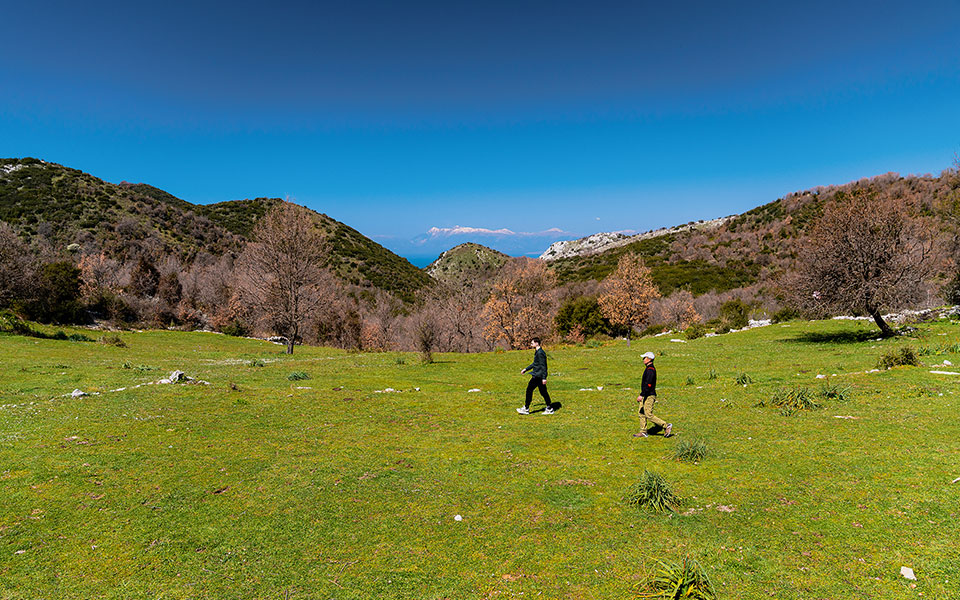
© Nicholas Mastoras
Leave the northern part of the island behind and head to Corfu town, where French finesse, and British solidity meet the craziness of the Ionian Islands to give birth to Corfu’s unique architectural style. Take a stroll along the Spianada, a large square divided in two parts (Upper and Lower), to visit the Old Palaces, the statue of British Commissioner Sir Frederick Adam, and the impressive Maitland Rotunda. Wander through the katounia (narrow streets) and along Liston, a wide pedestrianized street, reminiscent of San Marco Square in Venice.
Take in the Douglas Obelisk, dedicated to Commissioner Howard Douglas, or the Church of Saint George in the Old Fortress, built in the style of an ancient Greek Doric temple. This structure was formerly an Anglican church, but was converted into an Orthodox Church following the unification of the Ionian Islands with Greece. Take a look at the roof of Aghios Spyridon Church, and notice how similar it is to a Renaissance painting.
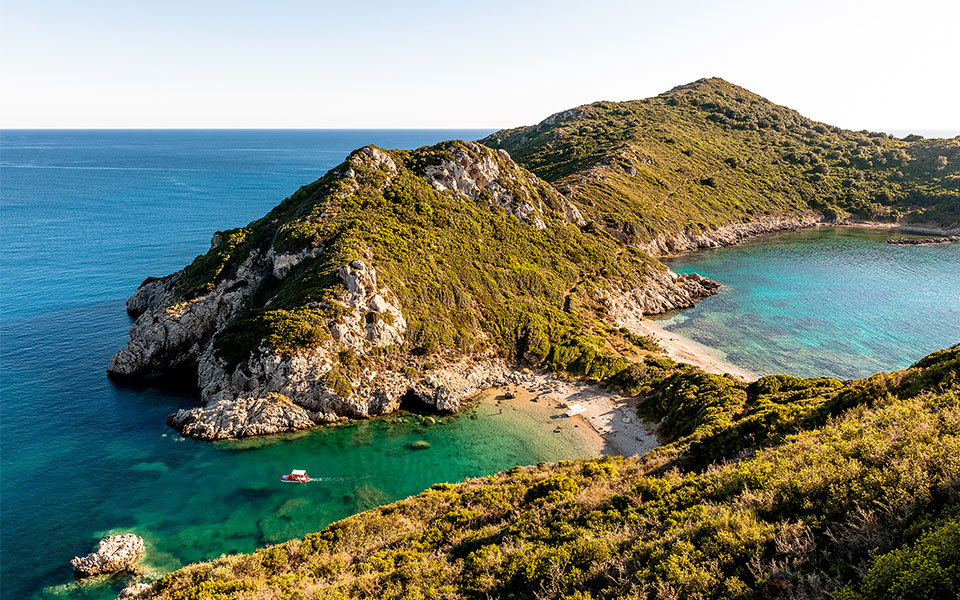
© Gregor Lengler/LAIF
The town of Corfu is unique, a fascinating Mediterranean version of various styles of Western civilization, with a multitude of hidden gems to pique your interest; the journey of exploration and discovery never ends. Bring the road trip to a close by venturing south, which does not have the verdant landscape of the north, nor the architectural marvels found in the middle. Yet the southern part of the island is home to several unique settings. For instance, Issos Beach in the southwest, next to Lake Korission, features sand dunes, cedar trees and views of the endless blue, similar to those found in southern Africa.
Finally, if you want to include hiking on your road trip, keep in mind that Corfu boasts a rather developed hiking culture. The Corfu Trail is the most well-known route, measuring almost 200km in length; it begins in the southernmost part of the island (Asprokavos) and terminates in the north (Aghios Spyridonas).

